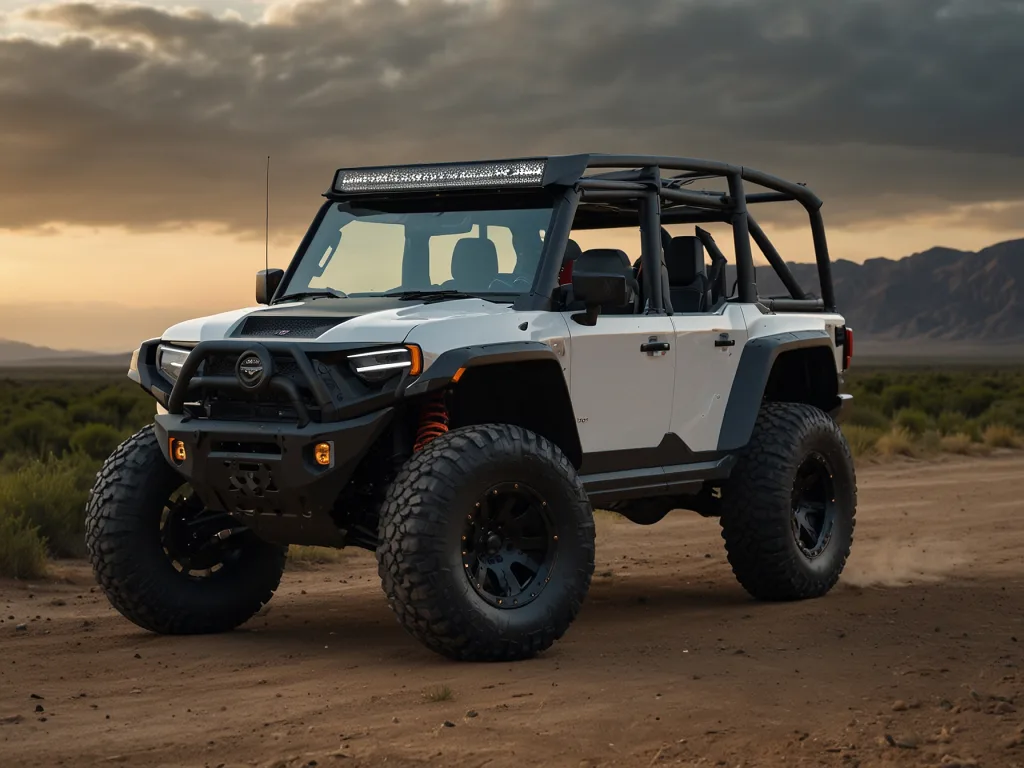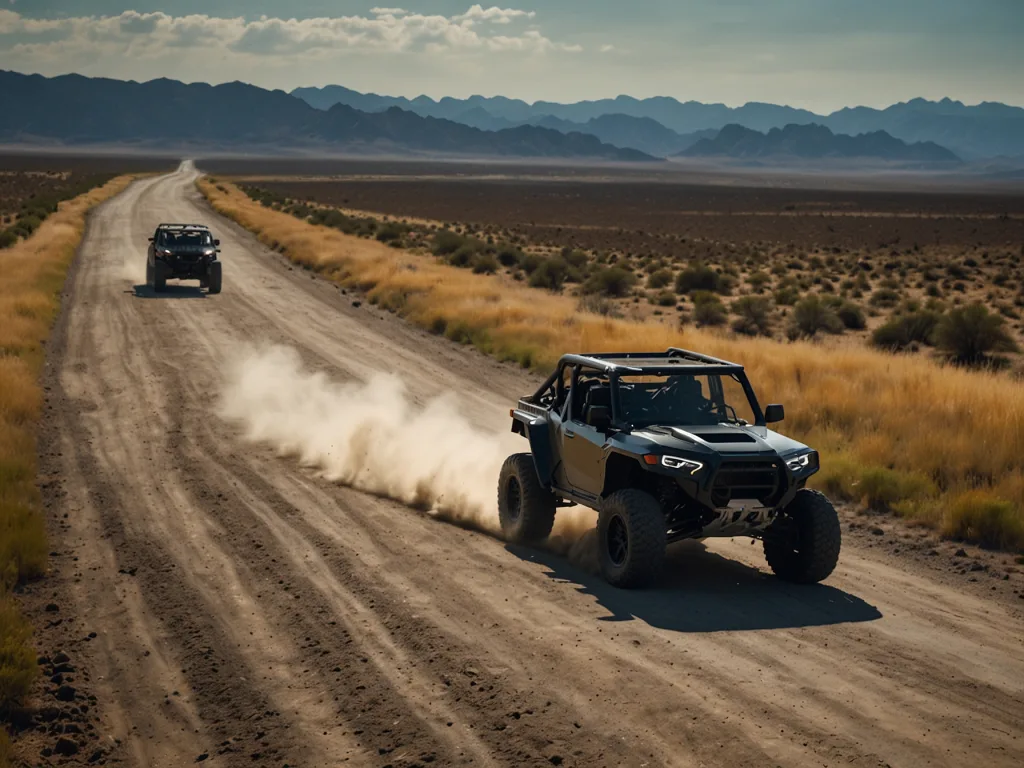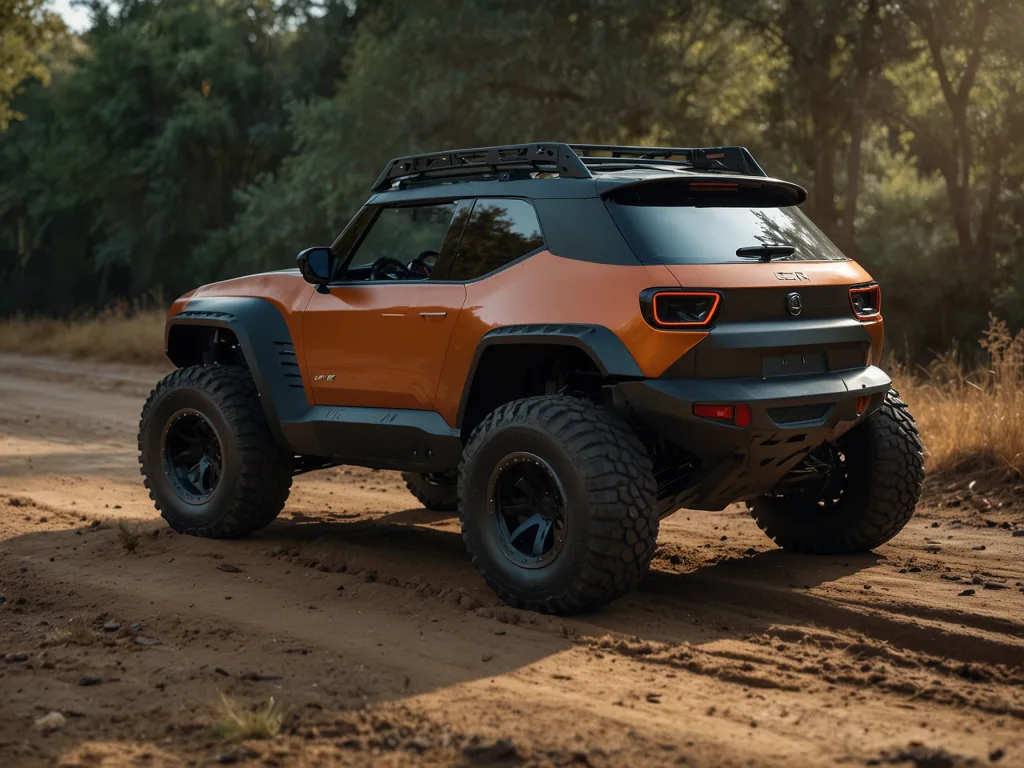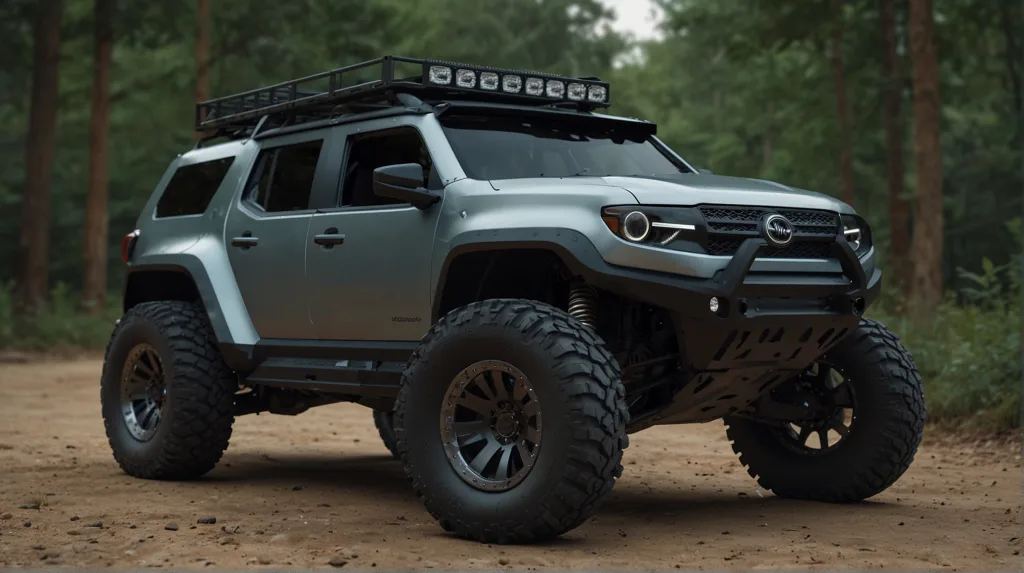What off Road Vehicles are Street Legal include certain specially modified jeeps, trucks, and SUVs. These vehicles must meet safety and emission standards to be roadworthy.
Exploring the world off the beaten path requires a rugged vehicle capable of handling unpredictable terrain, but adventurers also want the convenience of driving the same vehicle on the streets to reach their destinations. Street-legal off-road vehicles bridge this gap, offering the best of both worlds.
They come equipped with features like seat belts, headlights, turn signals, and mirrors, which are essential for safe driving on public roads. Manufacturers and after-market modification companies often focus on ensuring these vehicles adhere to the specific legal requirements laid out by various regions, ensuring enthusiasts can enjoy off-roading without the need to tow their vehicle to the trail. Whether it’s navigating through rocky landscapes or cruising down city roads, vehicles like modified Land Rovers, certain versions of the Jeep Wrangler, and the Ford Raptor are designed to transition seamlessly from dirt to pavement.
The Off-road To On-road Transition
Turning an off-road powerhouse into a street-legal ride is an exhilarating move that offers the best of both worlds. Navigating the off-road to on-road transition involves understanding legal requirements and making necessary modifications.
Criteria For Street Legality
Laws vary based on location, outlining specific features that off-road vehicles must have to legally drive on public roads.
- Lights: Headlights, taillights, and brake lights for visibility day and night.
- Mirrors: Rearview and side mirrors to monitor traffic.
- Tires: DOT-approved tires fit for street use.
- Speedometer: A visible and accurate gauge to track speed.
- Seatbelts: Proper restraints for driver and passengers.
- Emissions: Meeting state emission standards is crucial.
- Sound: Mufflers are often required to limit noise.
- Insurance: Appropriate coverage to protect against damages.
Each vehicle must pass a state-approved inspection to ensure these features are properly installed and functioning.
Modifications For Compliance
Transforming an off-road vehicle for street use means updates and additions.
| Part | Required Modification |
|---|---|
| Lights | Install DOT-approved lighting system. |
| Mirrors | Add side and rearview mirrors. |
| Tires | Switch to DOT-approved tires for on-road use. |
| Brakes | Ensure brakes are responsive and comply with regulations. |
| Seatbelts | Install federally-approved safety belts. |
| Horn | Add a horn audible from a distance. |
| Emissions | Upgrade to meet environmental guidelines. |
| License Plate | Mount a proper license plate bracket. |
An experienced mechanic can help ensure your vehicle meets the street legal criteria. Seek professional assistance for safe and precise modifications.

Types Of Street Legal Off-road Vehicles
Adventuring off the beaten path and onto city streets requires the right vehicle. Understanding which off-road vehicles can hit the public roads legally is crucial. Let’s dig into the types that can handle both terrains.
Factory-built Dual-purpose Models
If you’re seeking both fun and function, factory-built dual-purpose models are the ticket. These machines come ready for action. They have all the necessary equipment to comply with street-legal requirements.
- Headlights and taillights for visibility
- Turn signals to communicate with other drivers
- Mirrors for increased awareness
- Horn to alert pedestrians and vehicles
- EPA-compliant muffler system to reduce noise
- DOT-approved tires for safe road traction
Popular brands like Jeep Wrangler, Toyota 4Runner, and Ford Bronco dominate this segment. They balance off-road prowess with pavement manners.
Custom Converted Off-roaders
For those who love a personal touch, converting an off-roader into a street-legal companion is a thrilling project. This transformation requires attention to detail and knowing local laws.
- Install street-legal tires for better road grip and safety.
- Add SMV (Slow Moving Vehicle) signs if necessary.
- Ensure all lighting, including brake lights, function properly.
- Check that the muffler and exhaust system meet regulations.
Converters often start with models like the Polaris RZR or Can-Am Maverick. They upgrade these to pass inspections and roam freely on public roads.
Final notes: Registration and insurance are final steps for legality. Always check your state’s DMV website for specific street-legal requirements.
Key Legal Considerations
Before taking your off-road vehicle (ORV) to public roads, it’s crucial to know what makes them street legal. Not all ORVs are designed for highway use. Understanding the legal requirements is essential. Laws vary widely by location. Different states may have unique requirements. Federal laws also play a significant role. Always check local regulations before operating an ORV on streets.
Federal And State Regulations
Federal and state regulations often determine whether an off-road vehicle can hit the pavement. The United States Department of Transportation (DOT) sets basic standards. These must be met for any vehicle to be considered street legal. After meeting federal requirements, ORV owners must adhere to the specific laws of their state.
Each state has its own set of guidelines. They may include registration, insurance, and licensing requirements. Some common features that states require for street-legal ORVs include:
- Lights: Headlights, tail lights, turn signals
- Mirrors: At least one rear-view mirror
- Horn: Sound-producing device
- Tires: DOT-approved tires for street use
- Brakes: A braking system that meets DOT standards
- Muffler: A muffler system to control noise levels
Keep in mind, meeting these requirements doesn’t guarantee street legality in all areas. Always check the specific laws in your state.
Emission And Safety Standards
Meeting emission and safety standards is another critical step in making sure your ORV is street legal. Vehicles must pass various tests. They ensure that the ORV’s emissions are within safe levels. These tests protect the environment and our health.
Safety features are also under scrutiny. They keep drivers and passengers secure on the road. Safety standards commonly include:
| Safety Feature | Description |
|---|---|
| Seat belts | Restraint systems for all occupants |
| Windshield | Must be made of safety glass |
| Speedometer, Odometer | Measuring devices for speed and distance |
Vehicles typically undergo inspection. These checks ensure compliance with emission and safety regulations. Without passing such inspections, ORVs may not obtain on-road registration and cannot be legally driven on public roads.
Popular Street-legal Off-road Models
For those who love the rugged outdoors, but still need to hit the pavements, deciding on a street-legal off-road vehicle is exciting. Many off-road models are ready for both the trails and your daily commute. Let’s buckle up and look at some top choices that can handle both terrains seamlessly.
Jeeps And Trucks
Sturdy Jeeps and trucks top the list for on-and-off-road adventures. They offer the perfect blend of durability and legality for city streets. Think robust engines and 4×4 capability alongside required safety features.
- Jeep Wrangler: Known for its 4×4 prowess, it’s a natural fit for both terrains.
- Ford F-150 Raptor: This truck pairs off-road power with street-ready comfort.
- Chevrolet Colorado ZR2: A tough build with the finesse for highways and trails.
Dirt Bikes And Atvs
Dirt bikes and ATVs can be made street legal with some adjustments. They need lights, mirrors, and proper tires to hit the road legally.
| Dirt Bike Model | ATV Model |
|---|---|
| KTM 500 EXC-F | Polatis Scrambler XP 1000 |
| Honda CRF450L | Can-Am Outlander MAX |
Utvs And Side-by-sides
UTVs and side-by-sides require a little more work for road readiness. Additions like turn signals, a horn, and a rearview mirror will make them street-legal.
- Polaris Ranger XP 1000: A utility vehicle that adapts well to roads.
- Yamaha Wolverine RMAX2 1000: Impressive on rugged trails and smooth on streets.
- Can-Am Maverick Trail: Nimble and efficient for both off-roading and cruising.
Insurance And Registration
Taking your off-road vehicle onto the street involves more than just robust tires and a hardy suspension. It’s crucial to understand the legal requirements, such as insurance and registration. These ensure you can enjoy the thrill of the ride with peace of mind.
Protecting Your Vehicle And Yourself
Insurance stands as a guard for your off-road adventures. It covers costs from unexpected mishaps. Think of it as a protective shield for you and your vehicle.
- Liability insurance is essential and often a legal requirement. It pays for damages you may cause to others.
- Collision coverage helps repair your vehicle after an accident.
- Comprehensive insurance protects against theft, fire, and vandalism.
Remember, insurance policies vary by state. Consult with your insurance provider for a plan that fits your needs.
Registration Processes Across States
Getting your off-road vehicle street-legal involves a diverse registration process. No two states share the exact rules.
Start by checking your state’s Department of Motor Vehicles (DMV). Some require only the basics, like a title and proof of insurance. Others have a list of equipment standards your vehicle must meet.
| State | Title Requirement | Insurance Requirement | Equipment Standards |
|---|---|---|---|
| California | Yes | Yes | Lights, Mirrors |
| Arizona | Yes | Yes | Lights, Mirrors, Muffler |
| Texas | No | Yes | Horn, Brakes |
To navigate the DMV smoothly, gather your documents before your visit. Proof of ownership, insurance, and a driver’s license are typically a must.
In summary, legally hitting the roads with your off-road vehicle starts with two critical steps: securing insurance and completing state-specific registration. Nail down both, and you’ll be set for legal on-street adventures!

Customization Tips For Enthusiasts
Turning an off-road beast into a street-legal ride excites any enthusiast. The right mods bring out incredible performance and keep your ride within the law. Welcome to the thrilling world of customization!
Upgrades For Enhanced Performance
Boost your vehicle’s power and agility with these top upgrades:
- Engine Tuning: Elevate horsepower and torque.
- Suspension Kits: Improve ride quality and durability.
- All-Terrain Tires: Enhance grip and control.
- Skid Plates: Protect against underbody damage.
- LED Lighting: Brighten your path after sundown.
Remember, each upgrade should match your vehicle’s specs for peak performance.
Staying Within Legal Limits
Keep your modified ride street-legal with these tips:
- Check Local Laws: Every area has unique requirements.
- Emission Standards: Ensure your vehicle meets them.
- Safety Equipment: Include mirrors, seatbelts, and lights.
- Sound Limits: Avoid exhausts that are too loud.
- Height Restrictions: Align with state regulations.
Consult the Department of Transportation (DOT) for guidelines. Get approval for modifications to avoid fines.
| Modification | Requirement | Check for |
|---|---|---|
| Lights | DOT approved | Brightness and angle |
| Tires | DOT marked | Size and tread |
| Seatbelts | Required | Functionality |
| Exhaust | Noise compliant | Decibel level |
| Mirrors | At least one | Visibility |

Frequently Asked Questions On What Off Road Vehicles Are Street Legal
Can You Make A Rzr Street Legal In Texas?
Yes, you can make a RZR street legal in Texas by adding necessary equipment, such as mirrors, lights, and a horn, and obtaining a title, registration, and license plate from the Texas DMV.
What States Is It Legal To Drive An Atv On The Road?
ATV road legality varies by state and local laws. Some states allow ATVs on specific roads; others require special permits. Always check local regulations before driving ATVs on public roads.
Can You Ride A 4 Wheeler On The Road In Texas?
In Texas, you generally cannot ride a 4-wheeler on public roads. These vehicles are mainly for off-road use and may only cross roads at designated points or in emergencies, following specific local regulations.
Is It Legal To Drive A Utv On The Road In Minnesota?
In Minnesota, driving a UTV on public roads is generally illegal, except for crossing at right angles or on roads designated for UTV use by local authorities. Always check local laws for specific regulations.
Conclusion
Navigating the variety of off-road vehicles that are street legal can be exciting. As this guide shows, several options exist—from modified trucks to factory-ready UTVs. Always check your local laws to ensure compliance before hitting the road. Embrace the thrill of adventure with a vehicle that satisfies both your off-road and on-street needs.
Safe travels and happy trails!


